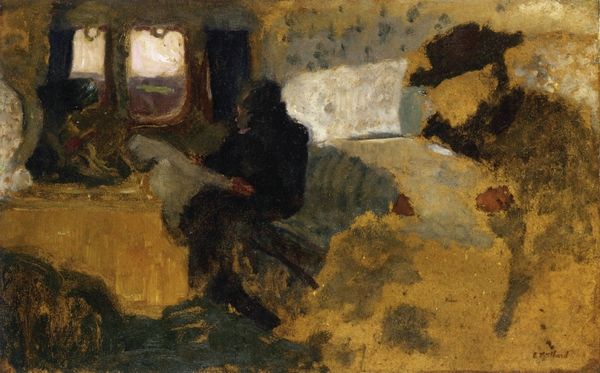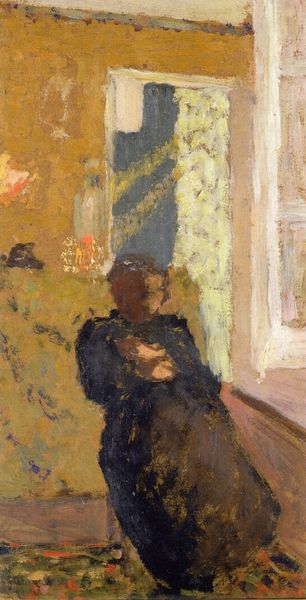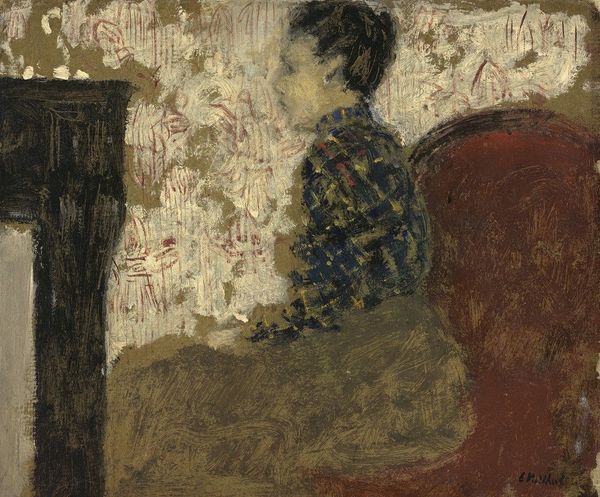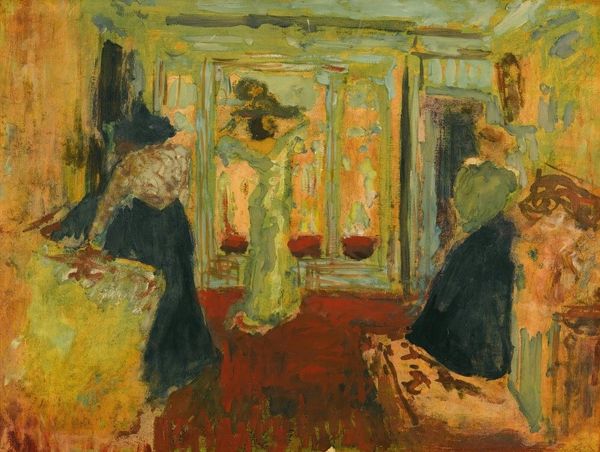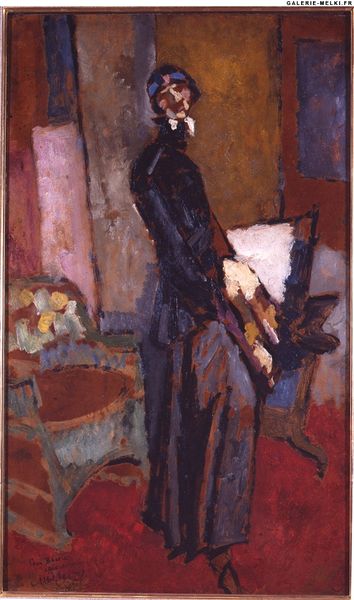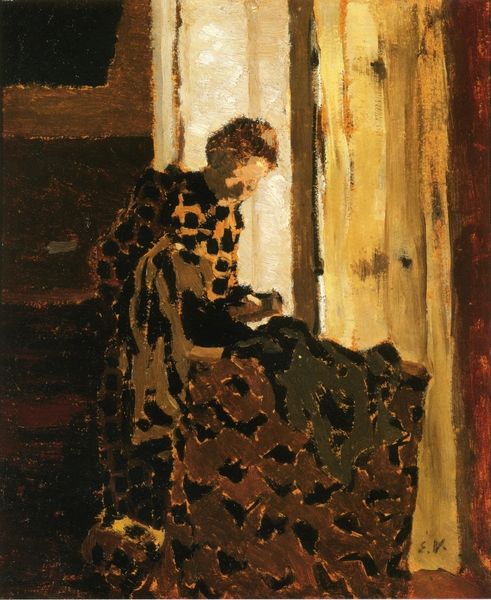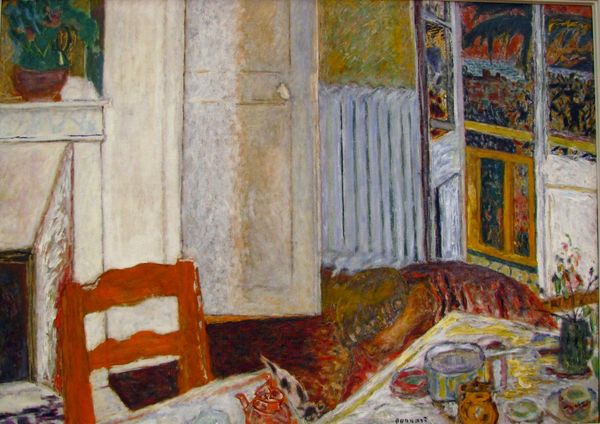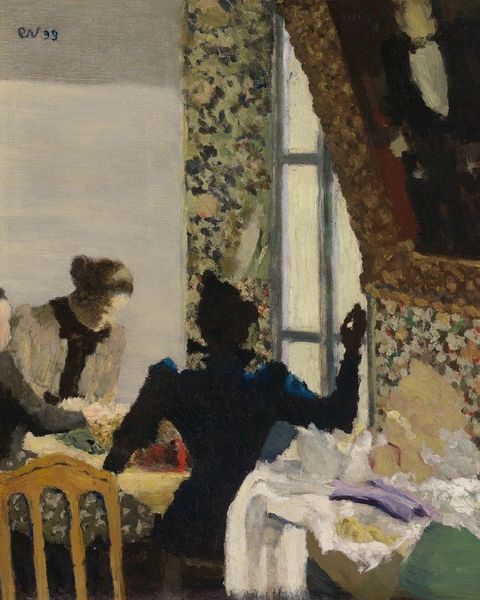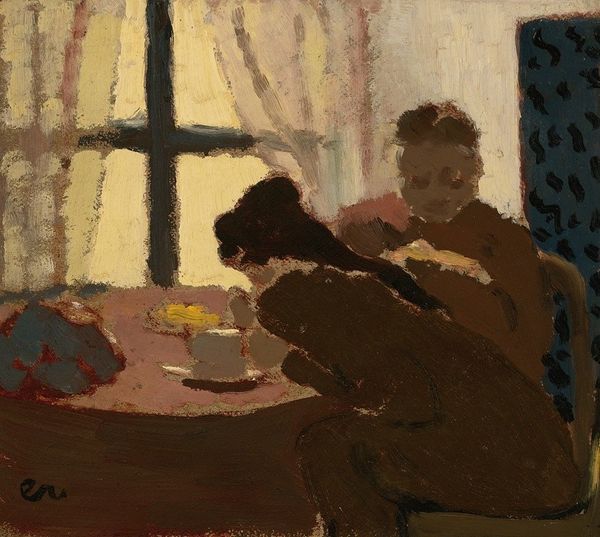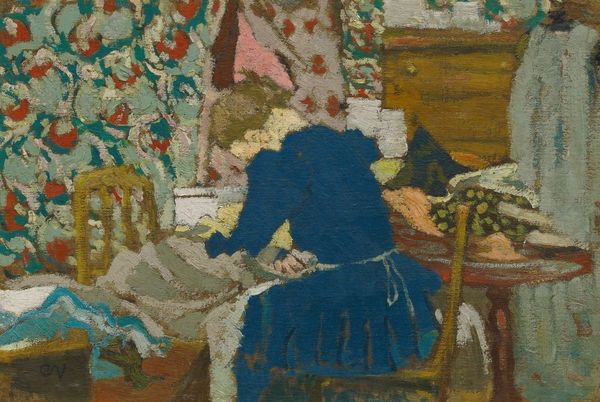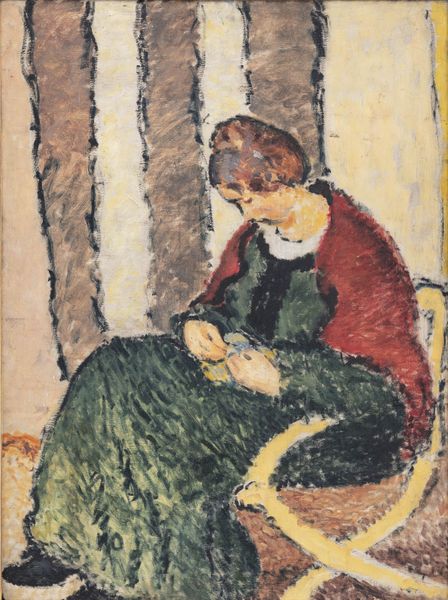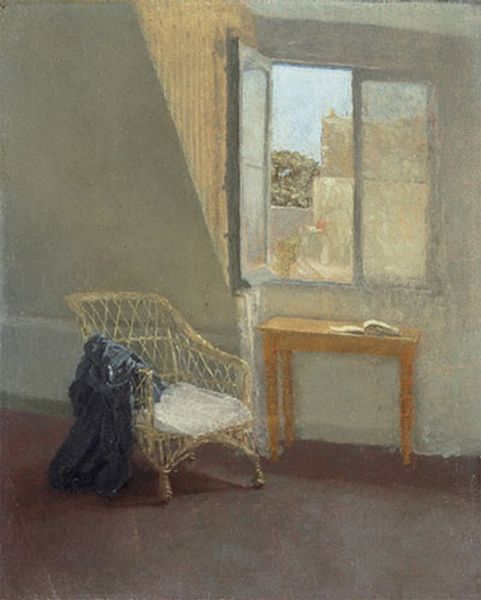
Copyright: Public Domain: Artvee
Curator: Look at this, Editor. Édouard Vuillard's “The Yellow Curtain,” painted circa 1893. There's an immediate sense of domesticity and warmth radiating from it, wouldn’t you agree? Editor: That striking, somewhat oppressive yellow grabs me first. It feels like looking at the world through filtered light, obscuring something. Curator: Yes, the dominating color is indeed a powerful choice. Note how Vuillard balances this with the floral pattern peeking from behind, creating a visually active surface, almost flattened. This pictorial flatness rejects illusionism and instead, emphasizes the inherent qualities of painting itself. Editor: But where did that yellow come from? What kind of dye produced such an even, saturated field? The fabric must be rather heavy to hang with such distinct verticality. There is something alluring about the process of weaving that fabric and what Vuillard chooses to focus on in his application, isn’t it? Curator: He definitely pulls away from traditional narrative content. Rather than storytelling, it's an arrangement of shapes, colors and lines. The figure becomes subsumed, a mere form nestled into the composition, almost as though it’s camouflaged, creating visual rhyme within its flat interior. It seems the very act of painting becomes the subject. Editor: You’re so right. What was the artist trying to tell us with the textile choice and overall material density, beyond an academic formal exercise? This must evoke Vuillard's context – middle class comfort made from patterned, heavy cloth purchased during his life in Paris! What about his process here – oil paints were much cheaper and accessible during his time as well, so choosing this would be an exciting statement about his place in the social landscape. Curator: Indeed, he was committed to his immediate surrounding environment and sensory experiences. It appears Vuillard wanted the viewer to delve deep into a play between surface and depth; something both intimate and profoundly abstract at the same time. Editor: I can’t help but wonder about the human touch. How was the space inhabited; was the woman depicted also a textile artist? And how would labor and artistry like that shape his perspective on Impressionism? These questions seem to bubble up from the canvas like pigment suspended in oil.
Comments
No comments
Be the first to comment and join the conversation on the ultimate creative platform.
